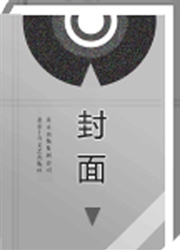

 中文摘要:
中文摘要:
The time-delay signature(TDS) of chaos output in a 1550 nm vertical-cavity surface-emitting laser(VCSEL) subject to fiber Bragg grating(FBG) feedback is investigated experimentally. Autocorrelation function(ACF) and mutual information(MI) are used for quantitatively identifying the TDS of chaos. For various bias currents, the TDS evolution with the feedback strength is different, as the FBG provides wavelength-selective feedback. Furthermore,based on the TDS map of the FBG feedback VCSEL(FBGF-VCSEL) in the parameter space of feedback strength and bias current, the optimal TDS suppression regions, where the dominant polarization mode of FBGF-VCSEL locates at the edge of the main lobe of FBG reflection spectrum, have been determined. Finally, for comparative purpose,the TDS of chaos in mirror feedback VCSEL(MF-VCSEL) also has been presented, and the results show that an FBGF-VCSEL possesses better TDS suppression performance than an MF-VCSEL.
 英文摘要:
英文摘要:
The time-delay signature (TDS) of chaos output in a 1550 nm vertical-cavity surface-emitting laser (VCSEL) subject to fiber Bragg grating (FBG) feedback is investigated experimentally. Autocorrelation function (ACF) and mutual information (MI) are used for quantitatively identifying the TDS of chaos. For various bias currents, the TDS evolution with the feedback strength is different, as the FBG provides wavelength-selective feedback. Furthermore, based on the TDS map of the FBG feedback VCSEL (FBGF-VCSEL) in the parameter space of feedback strength and bias current, the optimal TDS suppression regions, where the dominant polarization mode of FBGF-VCSEL locates at the edge of the main lobe of FBG reflection spectrum, have been determined. Finally, for comparative purpose, the TDS of chaos in mirror feedback VCSEL (MF-VCSEL) also has been presented, and the results show that an FBGF-VCSEL possesses better TDS suppression performance than an MF-VCSEL. (C) 2016 Chinese Laser Press
 同期刊论文项目
同期刊论文项目
 同项目期刊论文
同项目期刊论文
 Nonlinear dynamics of 1550 nm vertical-cavity surface-emitting laser with polarization preserved opt
Nonlinear dynamics of 1550 nm vertical-cavity surface-emitting laser with polarization preserved opt Optical generation of tunable millimeter-wave based on dual-beam optical injection Locked 1550 nm ve
Optical generation of tunable millimeter-wave based on dual-beam optical injection Locked 1550 nm ve Dual-channel chaos synchronization and communication based on a vertical-cavity surface emitting las
Dual-channel chaos synchronization and communication based on a vertical-cavity surface emitting las Investigation of bidirectional dual-channel long-distance chaos secure communication based on 1550nm
Investigation of bidirectional dual-channel long-distance chaos secure communication based on 1550nm Tunable andbroadband microwave frequency combs based on a semiconductor laser withincoherent optical
Tunable andbroadband microwave frequency combs based on a semiconductor laser withincoherent optical Two channel photonicmicrowave generation based on period-one oscillations of two orthogonallypolariz
Two channel photonicmicrowave generation based on period-one oscillations of two orthogonallypolariz Tbits/s physicalrandom bit generation based on mutually coupled semiconductor laser chaoticentropy s
Tbits/s physicalrandom bit generation based on mutually coupled semiconductor laser chaoticentropy s Wide bandwidth chaoticsignal generation in a monolithically integrated semiconductor laser viaoptica
Wide bandwidth chaoticsignal generation in a monolithically integrated semiconductor laser viaoptica Experimental investigations on nonlinear dynamics of a semiconductor laser subject to optical inject
Experimental investigations on nonlinear dynamics of a semiconductor laser subject to optical inject Time-delay signature concealment of polarization-resolved chaos outputs in vertical-cavity surface-e
Time-delay signature concealment of polarization-resolved chaos outputs in vertical-cavity surface-e Broadband chaos synchronization and communication based on mutually coupled VCSELs subjected to a ba
Broadband chaos synchronization and communication based on mutually coupled VCSELs subjected to a ba Generation of multi-channel high-speed physical random numbers originated from two chaotic signals o
Generation of multi-channel high-speed physical random numbers originated from two chaotic signals o Impact of optical feedback on current-induced polarization behavior of 1550nm vertical-cavity surfac
Impact of optical feedback on current-induced polarization behavior of 1550nm vertical-cavity surfac Long-Haul Dual-Channel Bidirectional Chaos Communication Based on Polarization-Resolved Chaos Synchr
Long-Haul Dual-Channel Bidirectional Chaos Communication Based on Polarization-Resolved Chaos Synchr Subharmonic Microwave Modulation Stabilization of Tunable Photonic Microwave Generated by Period-one
Subharmonic Microwave Modulation Stabilization of Tunable Photonic Microwave Generated by Period-one Simulation of bidirectional long-distance chaos communication performance in a novel fiber-optic cha
Simulation of bidirectional long-distance chaos communication performance in a novel fiber-optic cha Generation ofpolarization-resolved wideband unpredictability-enhanced chaotic signals basedon vertic
Generation ofpolarization-resolved wideband unpredictability-enhanced chaotic signals basedon vertic Influence of feedback strength on the characteristics of random number sequence extracted from an ex
Influence of feedback strength on the characteristics of random number sequence extracted from an ex Acquiring narrow linewidth microwave signals based on an optical injection semiconductor laser under
Acquiring narrow linewidth microwave signals based on an optical injection semiconductor laser under Time-delay signatures hidden in the phase of chaotic output of mutually delay-coupled vertical-cavit
Time-delay signatures hidden in the phase of chaotic output of mutually delay-coupled vertical-cavit Power-induced polarizationswitching and bistability characteristics in 1550 nm VCSELs subject toorth
Power-induced polarizationswitching and bistability characteristics in 1550 nm VCSELs subject toorth 期刊信息
期刊信息
